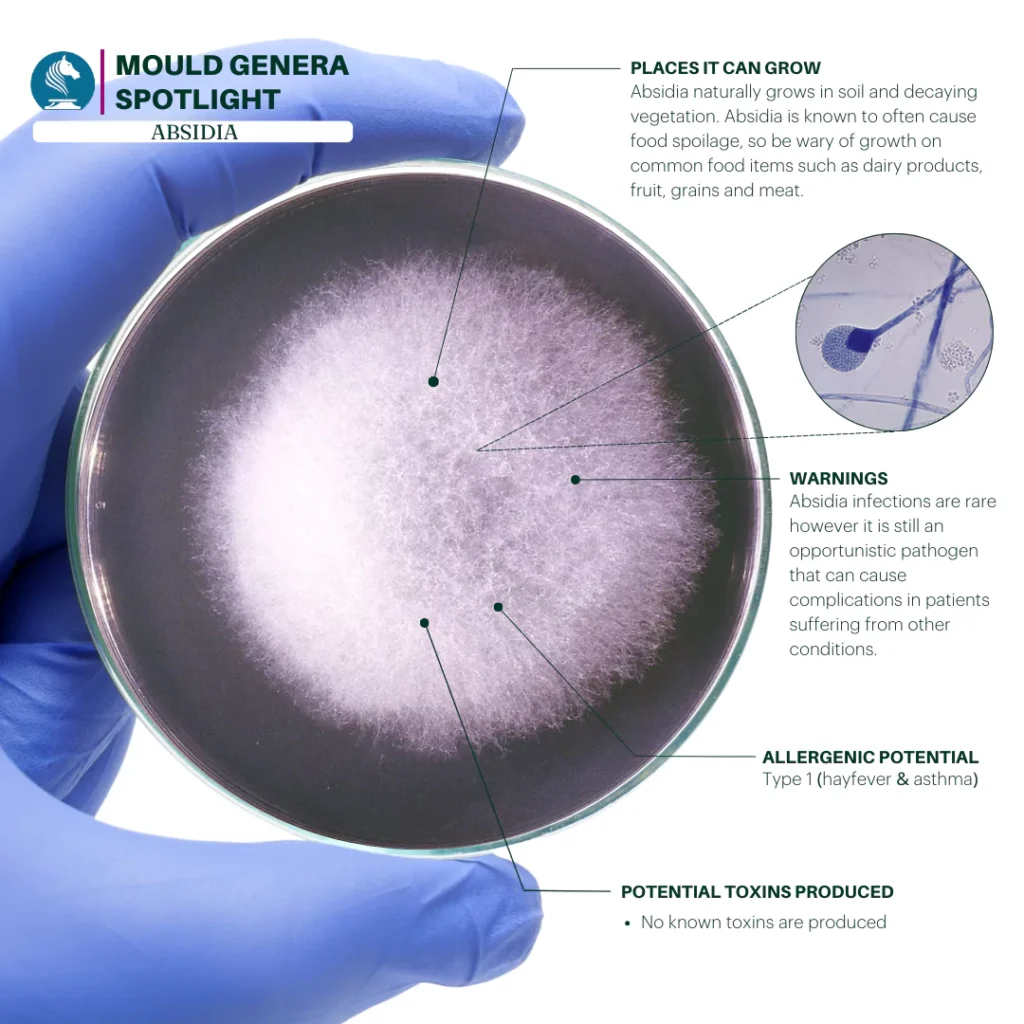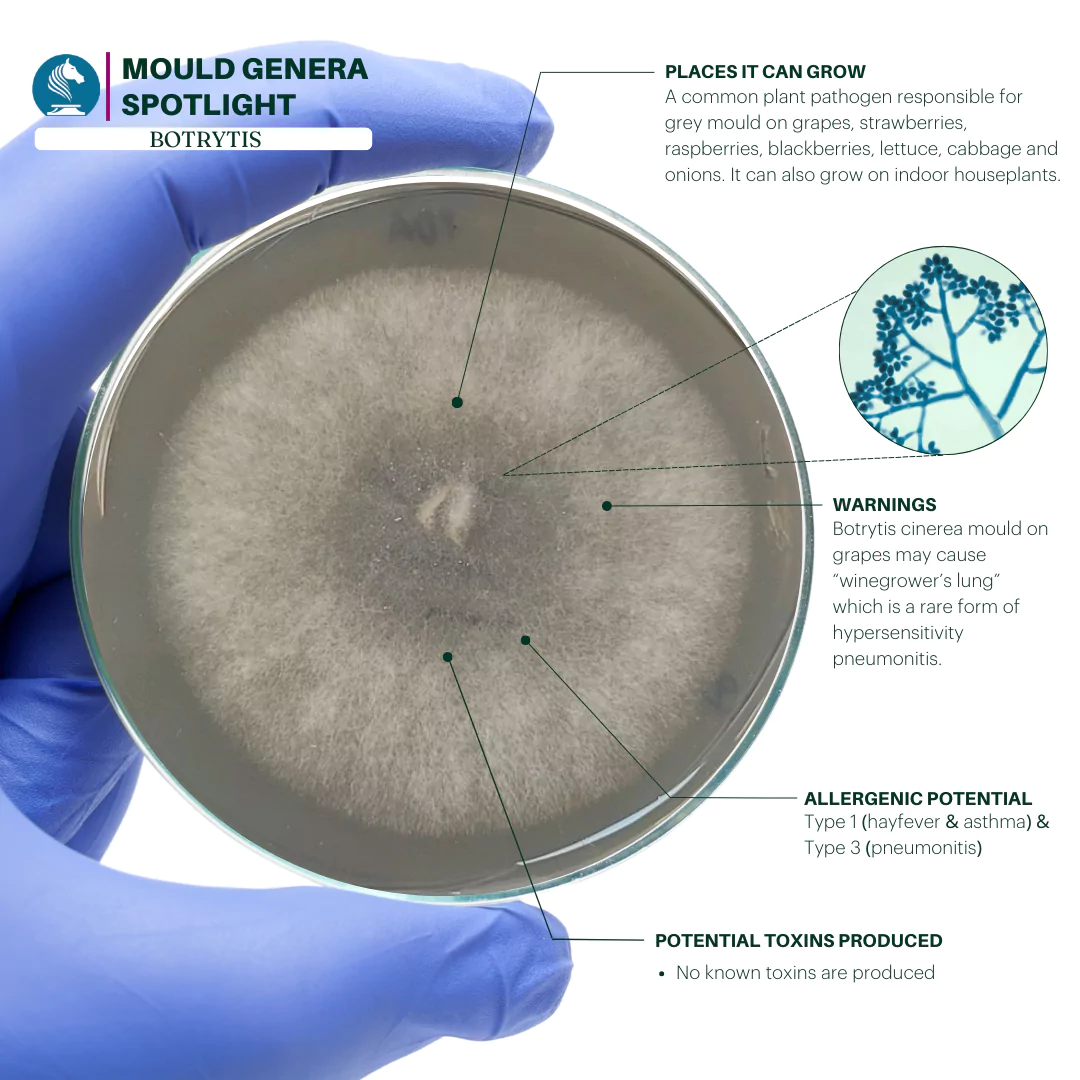
Mould Genera Spotlight - Absidia
Overview
Absidia is a genus of fungi commonly found in soil, decaying organic matter, and in environments with high moisture. The most recognised species within this genus is Absidia corymbifera, known for its involvement in human and animal infections, particularly in individuals with weakened immune systems. Absidia species are part of the Zygomycetes class, which includes fast-growing moulds that thrive in moist conditions.

Habitat and Growth Locations
Absidia moulds are widespread and can be found in various environments:
- Soil and decaying organic matter: They naturally occur in compost, leaf litter, and other decomposing plant materials.
- Indoor environments: Absidia can grow in damp, moisture-prone areas like bathrooms, basements, and air conditioning units, especially where there has been water damage.
- Food storage: This mould can sometimes be found on stored foods like bread, fruits, and vegetables, particularly in warm, humid conditions.
Health Risks and Allergenic Potential
Absidia corymbifera is an opportunistic pathogen and can pose significant health risks, particularly in immunocompromised individuals:
- Mucormycosis: Absidia corymbifera is one of the species associated with mucormycosis, a serious fungal infection that affects the sinuses, lungs, and brain. It is often life-threatening and requires immediate medical attention.
- Infections in immunocompromised individuals: People with weakened immune systems, such as those undergoing chemotherapy or organ transplant patients, are at higher risk of infections from Absidia. In these cases, it can lead to respiratory infections, cutaneous (skin) infections, and even systemic infections.
- Allergenic potential: While not as potent an allergen as some other moulds, Absidia may still cause respiratory issues, such as coughing or wheezing, in sensitive individuals when exposed to its spores.
Toxins Produced
While Absidia is more commonly associated with infections, there is evidence that it can produce mycotoxins under certain conditions. These toxins can have harmful effects, especially when spores are inhaled in large quantities. However, Absidia is generally less studied in this regard compared to moulds like Aspergillus or Penicillium, making its toxin profile less understood.
Industrial Uses
Some species within the Absidia genus have been explored for industrial uses:
- Enzyme production: Absidia is known to produce a variety of enzymes, including lipases and proteases, which are useful in biotechnology for the breakdown of fats and proteins. These enzymes can be applied in industries such as food processing and pharmaceuticals.
- Biodegradation: Absidia species have also shown potential in biodegradation processes, particularly in breaking down organic waste materials, making them useful in environmental cleanup efforts.




